
A | B | C | D | E | F | G | H | CH | I | J | K | L | M | N | O | P | Q | R | S | T | U | V | W | X | Y | Z | 0 | 1 | 2 | 3 | 4 | 5 | 6 | 7 | 8 | 9
 The peace sign (or peace symbol), designed and first used in the UK by the Campaign for Nuclear Disarmament, later became associated with elements of the 1960s counterculture.[1][2] | |
| Date | Early 1960s to early 1970s |
|---|---|
| Location | Worldwide |
| Outcome | Cultural movements British Invasion Hippie movement (Hippie trail) Back-to-the-land movement (Communes) Sexual revolution Swinging Sixties (Swinging London) Rise of the music festival New Age New Wave movements Progg Protest movements Protests of 1968 Anti-nuclear movement Civil rights movement (Anti-racism) Northern Ireland Civil Rights Movement Black Power movement Chicano Movement American Indian Movement (Indigenous rights) Māori protest movement (Māori renaissance) Asian American movement Nuyorican Movement Free Speech Movement Gay liberation Opposition to United States involvement in the Vietnam War Second-wave feminism New Left (Japan), (West Germany) Environmentalism |
The counterculture of the 1960s was an anti-establishment cultural phenomenon and political movement that developed in the Western world during the mid-20th century.[3] It began in the early 1960s,[4] and continued through the early 1970s.[5] It is often synonymous with cultural liberalism and with the various social changes of the decade. The effects of the movement[5] have been ongoing to the present day. The aggregate movement gained momentum as the civil rights movement in the United States had made significant progress, such as the Voting Rights Act of 1965, and with the intensification of the Vietnam War that same year, it became revolutionary to some.[6][7][8] As the movement progressed, widespread social tensions also developed concerning other issues, and tended to flow along generational lines regarding respect for the individual, human sexuality, women's rights, traditional modes of authority, rights of people of color, end of racial segregation, experimentation with psychoactive drugs, and differing interpretations of the American Dream. Many key movements related to these issues were born or advanced within the counterculture of the 1960s.[9]
As the era unfolded, what emerged were new cultural forms and a dynamic subculture that celebrated experimentation, individuality,[10] modern incarnations of Bohemianism, and the rise of the hippie and other alternative lifestyles. This embrace of experimentation is particularly notable in the works of popular musical acts such as the Beatles, Jimi Hendrix, and Bob Dylan, as well as of New Hollywood, French New Wave, and Japanese New Wave filmmakers, whose works became far less restricted by censorship. Within and across many disciplines, many other creative artists, authors, and thinkers helped define the counterculture movement. Everyday fashion experienced a decline of the suit and especially of the wearing of hats; other changes included the normalisation of long hair worn down for women (as well as many men at the time),[11] the popularization of traditional African, Indian and Middle Eastern styles of dress (including the wearing of natural hair for those of African descent), the invention and popularization of the miniskirt which raised hemlines above the knees, as well as the development of distinguished, youth-led fashion subcultures. Styles based around jeans, for both men and women, became an important fashion movement that has continued up to the present day.
Several factors distinguished the counterculture of the 1960s from anti-authoritarian movements of previous eras. The post-World War II baby boom[12][13] generated an unprecedented number of potentially disaffected youth as prospective participants in a rethinking of the direction of the United States and other democratic societies.[14] Post-war affluence allowed much of the counterculture generation to move beyond the provision of the material necessities of life that had preoccupied their Depression-era parents.[15] The era was also notable in that a significant portion of the array of behaviors and "causes" within the larger movement were quickly assimilated within mainstream society, particularly in the US, even though counterculture participants numbered in the clear minority within their respective national populations.[16][17]
Historical background
Post-war geopolitics

The Cold War between communist and capitalist states involved espionage and preparation for war between powerful nations,[18][19] along with political and military interference by powerful states in the internal affairs of less powerful nations. Poor outcomes from some of these activities set the stage for disillusionment with and distrust of, post-war governments.[20] Examples included harsh responses from the Soviet Union (USSR) towards popular anti-communist uprisings, such as the 1956 Hungarian Revolution and Czechoslovakia's Prague Spring in 1968; and the botched US Bay of Pigs Invasion of Cuba in 1961.
In the US, President Dwight D. Eisenhower's initial deception[21] over the nature of the 1960 U-2 incident resulted in the government being caught in a blatant lie at the highest levels, and contributed to a backdrop of growing distrust of authority among many who came of age during the period.[22][23][24] The Partial Test Ban Treaty divided the establishment within the US along political and military lines.[25][26][27] Internal political disagreements concerning treaty obligations in Southeast Asia (SEATO), especially in Vietnam, and debate as to how other communist insurgencies should be challenged, also created a rift of dissent within the establishment.[28][29][30] In the UK, the Profumo affair also involved establishment leaders being caught in deception, leading to disillusionment and serving as a catalyst for liberal activism.[31]
The Cuban Missile Crisis, which brought the world to the brink of nuclear war in October 1962, was largely fomented by duplicitous speech and actions on the part of the Soviet Union.[32][33] The assassination of US President John F. Kennedy in November 1963, and the attendant theories concerning the event, led to further diminished trust in government, including among younger people.[34][35][36]
Social issues and calls to action
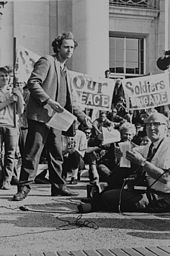
Many social issues fueled the growth of the larger counterculture movement. One was a nonviolent movement in the United States seeking to resolve constitutional civil rights illegalities, especially regarding general racial segregation, longstanding disfranchisement of Black people in the South by white-dominated state government, and ongoing racial discrimination in jobs, housing, and access to public places in both the North and the South.
On college and university campuses, student activists fought for the right to exercise their basic constitutional rights, especially freedom of speech and freedom of assembly.[37] Many counterculture activists became aware of the plight of the poor, and community organizers fought for the funding of anti-poverty programs, particularly in the South and within inner city areas in the United States.[38][39]
Environmentalism grew from a greater understanding of the ongoing damage caused by industrialization, resultant pollution, and the misguided use of chemicals such as pesticides in well-meaning efforts to improve the quality of life for the rapidly growing population.[40] Authors such as Rachel Carson played key roles in developing a new awareness among the global population of the fragility of our planet, despite resistance from elements of the establishment in many countries.[41]
The need to address minority rights of women, gay people, the disabled, and many other neglected constituencies within the larger population came to the forefront as an increasing number of primarily younger people broke free from the constraints of 1950s orthodoxy and struggled to create a more inclusive and tolerant social landscape.[42][43]
The availability of new and more effective forms of birth control was a key underpinning of the sexual revolution. The notion of "recreational sex" without the threat of unwanted pregnancy radically changed the social dynamic and permitted both women and men much greater freedom in the selection of sexual lifestyles outside the confines of traditional marriage.[44] With this change in attitude, by the 1990s the ratio of children born out of wedlock rose from 5% to 25% for Whites and from 25% to 66% for African-Americans.[45]
Emergent media
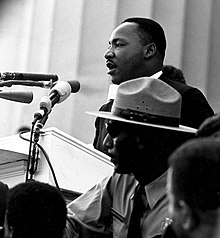
Television
For those born after World War II, the emergence of television as a source of entertainment and information—as well as the associated massive expansion of consumerism afforded by post-war affluence and encouraged by TV advertising—were key components in creating disillusionment for some younger people and in the formulation of new social behaviours, even as ad agencies heavily courted the "hip" youth market.[46][47] In the US, nearly real-time TV news coverage of the civil rights movement era's 1963 Birmingham Campaign, the "Bloody Sunday" event of the 1965 Selma to Montgomery marches, and graphic news footage from Vietnam brought horrifying, moving images of the bloody reality of armed conflict into living rooms for the first time.[48]
New cinema
The breakdown of enforcement of the US Hays Code[49] concerning censorship in motion picture production, the use of new forms of artistic expression in European and Asian cinema, and the advent of modern production values heralded a new era of art-house, pornographic, and mainstream film production, distribution, and exhibition. The end of censorship resulted in a complete reformation of the western film industry. With new-found artistic freedom, a generation of exceptionally talented New Wave film makers working across all genres brought realistic depictions of previously prohibited subject matter to neighborhood theater screens for the first time, even as Hollywood film studios were still considered a part of the establishment by some elements of the counterculture. Successful 1960s new films of the New Hollywood were Bonnie and Clyde, The Graduate, The Wild Bunch, and Dennis Hopper's Easy Rider.
Other examples of hippie modernist cinema includes experimental short films made by figures like Jordan Belson and Bruce Conner, the concert film Gimme Shelter, Medium Cool, Zabriskie Point and Punishment Park.[50][51][52]
New radio

By the later 1960s, previously under-regarded FM radio replaced AM radio as the focal point for the ongoing explosion of rock and roll music, and became the nexus of youth-oriented news and advertising for the counterculture generation.[53][54]
Changing lifestyles
Communes, collectives, and intentional communities regained popularity during this era.[55] Early communities such as the Hog Farm, Quarry Hill, and Drop City in the US were established as straightforward agrarian attempts to return to the land and live free of interference from outside influences. As the era progressed, many people established and populated new communities in response to not only disillusionment with standard community forms, but also dissatisfaction with certain elements of the counterculture itself. Some of these self-sustaining communities have been credited with the birth and propagation of the international Green Movement.
The emergence of an interest in expanded spiritual consciousness, yoga, occult practices and increased human potential helped to shift views on organized religion during the era. In 1957, 69% of US residents polled by Gallup said religion was increasing in influence. By the late 1960s, polls indicated less than 20% still held that belief.[56]
The "Generation Gap", or the inevitable perceived divide in worldview between the old and young, was perhaps never greater than during the counterculture era.[57] A large measure of the generational chasm of the 1960s and early 1970s was born of rapidly evolving fashion and hairstyle trends that were readily adopted by the young, but often misunderstood and ridiculed by the old. These included the wearing of very long hair by men,[58] the wearing of natural or "Afro" hairstyles by Black people, the donning of revealing clothing by women in public, and the mainstreaming of the psychedelic clothing and regalia of the short-lived hippie culture. Ultimately, practical and comfortable casual apparel, namely updated forms of T-shirts (often tie-dyed, or emblazoned with political or advertising statements), and Levi Strauss-branded blue denim jeans[59] became the enduring uniform of the generation, as daily wearing of suits along with traditional Western dress codes declined in use. The fashion dominance of the counterculture effectively ended with the rise of the Disco and Punk Rock eras in the later 1970s, even as the global popularity of T-shirts, denim jeans, and casual clothing in general have continued to grow.
Emergent middle-class drug culture
In the western world, the ongoing criminal legal status of the recreational drug industry was instrumental in the formation of an anti-establishment social dynamic by some of those coming of age during the counterculture era. The explosion of marijuana use during the era, in large part by students on fast-expanding college campuses,[60] created an attendant need for increasing numbers of people to conduct their personal affairs in secret in the procurement and use of banned substances. The classification of marijuana as a narcotic, and the attachment of severe criminal penalties for its use, drove the act of smoking marijuana, and experimentation with substances in general, deep underground. Many began to live largely clandestine lives because of their choice to use such drugs and substances, fearing retribution from their governments.[61][62]
Law enforcement
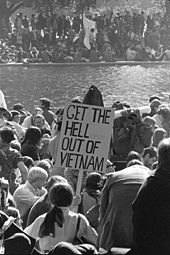
The confrontations between college students (and other activists) and law enforcement officials became one of the hallmarks of the era. Many younger people began to show deep distrust of police, and terms such as "fuzz" and "pig" as derogatory epithets for police reappeared, and became key words within the counterculture lexicon. The distrust of police was based not only on fear of police brutality during political protests, but also on generalized police corruption—especially police manufacture of false evidence, and outright entrapment, in drug cases. In the US, the social tension between elements of the counterculture and law enforcement reached the breaking point in many notable cases, including: the Columbia University protests of 1968 in New York City,[63][64][65] the 1968 Democratic National Convention protests in Chicago,[66][67][68] the arrest and imprisonment of John Sinclair in Ann Arbor, Michigan,[69] and the Kent State shootings at Kent State University in Kent, Ohio, where National Guardsman acted as surrogates for police.[70] Police malfeasance was also an ongoing issue in the UK during the era.[71]
Vietnam War
The Vietnam War, and the protracted national divide between supporters and opponents of the war, were arguably the most important factors contributing to the rise of the larger counterculture movement.
The widely accepted assertion that anti-war opinion was held only among the young is a myth,[72][73] but enormous war protests consisting of thousands of mostly younger people in every major US city, and elsewhere across the Western world, effectively united millions against the war, and against the war policy that prevailed under five US congresses and during two presidential administrations.
Regions
Western Europe
The counterculture movement took hold in Western Europe, with London, Amsterdam, Paris, Rome and Milan, Copenhagen and West Berlin rivaling San Francisco and New York as counterculture centers.
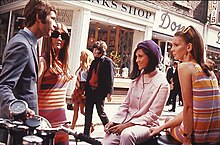
The UK Underground was a movement linked to the growing subculture in the US and associated with the hippie phenomenon, generating its own magazines and newspapers, fashion, music groups, and clubs. Underground figure Barry Miles said, "The underground was a catch-all sobriquet for a community of like-minded anti-establishment, anti-war, pro-rock'n'roll individuals, most of whom had a common interest in recreational drugs. They saw peace, exploring a widened area of consciousness, love and sexual experimentation as more worthy of their attention than entering the rat race. The straight, consumerist lifestyle was not to their liking, but they did not object to others living it. But at that time the middle classes still felt they had the right to impose their values on everyone else, which resulted in conflict."[74]
In the Netherlands, Provo was a counterculture movement that focused on "provocative direct action ('pranks' and 'happenings') to arouse society from political and social indifference".[75][76]
In France, the General Strike centered in Paris in May 1968 united French students, and nearly toppled the government.[77]
Kommune 1 or K1 was a commune in West Berlin known for its bizarre staged events that fluctuated between satire and provocation. These events served as inspiration for the "Sponti" movement and other leftist groups. In the late summer of 1968, the commune moved into a deserted factory on Stephanstraße to reorient. This second phase of Kommune 1 was characterized by sex, music and drugs. Soon, the commune was receiving visitors from all over the world, including Jimi Hendrix.[78][79]
Eastern Europe
Mánička is a Czech term used for young people with long hair, usually males, in Czechoslovakia through the 1960s and 1970s. Long hair for males during this time was considered an expression of political and social attitudes in communist Czechoslovakia. From the mid-1960s, the long-haired and "untidy" persons (so called máničky or vlasatci (in English: Mops) were banned from entering pubs, cinema halls, theatres and using public transportation in several Czech cities and towns.[80] In 1964, the public transportation regulations in Most and Litvínov excluded long-haired máničky as displeasure-evoking persons. Two years later, the municipal council in Poděbrady banned máničky from entering cultural institutions in the town.[80] In August 1966, Rudé právo informed that máničky in Prague were banned from visiting restaurants of the I. and II. price category.[80]
In 1966, during a big campaign coordinated by the Communist Party of Czechoslovakia, around 4,000 young males were forced to cut their hair, often in the cells with the assistance of the state police.[81] On August 19, 1966, during a "safety intervention" organized by the state police, 140 long-haired people were arrested. As a response, the "community of long-haired" organized a protest in Prague. More than 100 people cheered slogans such as "Give us back our hair!" or "Away with hairdressers!". The state police arrested the organizers and several participants of the meeting. Some of them were given prison sentences.[80] According to the newspaper Mladá fronta Dnes, the Czechoslovak Ministry of Interior in 1966 even compiled a detailed map of the frequency of occurrence of long-haired males in Czechoslovakia.[82] In August 1969, during the first anniversary of the Soviet occupation of Czechoslovakia, the long-haired youth were one of the most active voices in the state protesting against the occupation.[80] Youth protesters have been labeled as "vagabonds" and "slackers" by the official normalized press.[80]
Australia

Oz magazine was first published as a satirical humour magazine between 1963 and 1969 in Sydney, and, in its second and better known incarnation, became a "psychedelic hippy" magazine from 1967 to 1973 in London. Strongly identified as part of the underground press, it was the subject of two celebrated obscenity trials, one in Australia in 1964 and the other in the United Kingdom in 1971.[83][84]
The Digger was published monthly between 1972 and 1975 and served as a national outlet for many movements within Australia's counterculture with notable contributors—including second-wave feminists Anne Summers and Helen Garner; Californian cartoonist Ron Cobb's observations during a year-long stay in the country; Aboriginal activist Cheryl Buchanan (who was active in the 1972 setup of the Aboriginal Tent Embassy;[85] and later partner of poet and activist Lionel Fogarty[86]) and radical scientist Alan Roberts (1925–2017[87]) on global warming—and ongoing coverage of cultural trailblazers such as the Australian Performing Group (aka Pram Factory), and emerging Australian filmmakers. The Digger was produced by an evolving collective, many of whom had previously produced counterculture newspapers Revolution and High Times, and all three of these magazines were co-founded by publisher/editor Phillip Frazer, who launched Australia's legendary pop music paper Go-Set in 1966, when he was himself a teenager.
Latin America

In Mexico, rock music was tied into the youth revolt of the 1960s. Mexico City, as well as northern cities such as Monterrey, Nuevo Laredo, Ciudad Juárez, and Tijuana, were exposed to US music. Many Mexican rock stars became involved in the counterculture. The three-day Festival Rock y Ruedas de Avándaro, held in 1971, was organized in the valley of Avándaro near the city of Toluca, a town neighboring Mexico City, and became known as "The Mexican Woodstock". Nudity, drug use, and the presence of the US flag scandalized conservative Mexican society to such an extent that the government clamped down on rock and roll performances for the rest of the decade. The festival, marketed as proof of Mexico's modernization, was never expected to attract the masses it did, and the government had to evacuate stranded attendees en masse at the end. This occurred during the era of President Luis Echeverría, an extremely repressive era in Mexican history. Anything that could be connected to the counterculture or student protests was prohibited from being broadcast on public airwaves, with the government fearing a repeat of the student protests of 1968. Few bands survived the prohibition, though the ones that did, like Three Souls in My Mind (now El Tri), remained popular due in part to their adoption of Spanish for their lyrics, but mostly as a result of a dedicated underground following. While Mexican rock groups were eventually able to perform publicly by the mid-1980s, the ban prohibiting tours of Mexico by foreign acts lasted until 1989.[88]
The Cordobazo was a civil uprising in the city of Córdoba, Argentina, in the end of May 1969, during the military dictatorship of General Juan Carlos Onganía, which occurred a few days after the Rosariazo, and a year after the French May '68. Contrary to previous protests, the Cordobazo did not correspond to previous struggles, headed by Marxist workers' leaders, but associated students and workers in the same struggle against the military government.[89]
Social and political movements
Ethnic and Racial movements
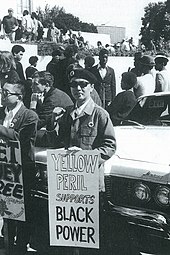
The Civil Rights Movement, a key element of the larger counterculture movement, involved the use of applied nonviolence to assure that equal rights guaranteed under the US Constitution would apply to all citizens. Many states illegally denied many of these rights to African-Americans, and this was partially successfully addressed in the early and mid-1960s in several major nonviolent movements.[90][91]
The Chicano Movement of the 1960s, also called the Chicano civil rights movement, was a civil rights movement extending the Mexican-American civil rights movement of the 1960s with the stated goal of achieving Mexican American empowerment.
The American Indian Movement (or AIM) is a Native American grassroots movement that was founded in July 1968 in Minneapolis, Minnesota.[92] A.I.M. was initially formed in urban areas to address systemic issues of poverty and police brutality against Native Americans.[93] A.I.M. soon widened its focus from urban issues to include many Indigenous Tribal issues that Native American groups have faced due to settler colonialism of the Americas, such as treaty rights, high rates of unemployment, education, cultural continuity, and preservation of Indigenous cultures.[93][94]
The Asian American movement was a sociopolitical movement in which the widespread grassroots effort of Asian Americans affected racial, social and political change in the US, reaching its peak in the late 1960s to mid-1970s. During this period Asian Americans promoted antiwar and anti-imperialist activism, directly opposing what was viewed as an unjust Vietnam war. The American Asian Movement differs from previous Asian-American activism due to its emphasis on Pan-Asianism and its solidarity with US and international Third World movements.
"Its founding principle of coalition politics emphasizes solidarity among Asians of all ethnicities, multiracial solidarity among Asian Americans as well as with African, Latino, and Native Americans in the United States, and transnational solidarity with peoples around the globe impacted by U.S. militarism."[95]
and intellectual movement involving poets, writers, musicians and artists who are Puerto Rican or of Puerto-Rican descent, who live in or near New York City, and either call themselves or are known as Nuyoricans.[96] It originated in the late 1960s and early 1970s in neighborhoods such as Loisaida, East Harlem, Williamsburg, and the South Bronx as a means to validate Puerto Rican experience in the United States, particularly for poor and working-class people who suffered from marginalization, ostracism, and discrimination.
Young Cuban exiles in the United States would develop interests in Cuban identity, and politics.[97] This younger generation had experienced the United States during the rising anti-war movement, civil rights movement, and feminist movement of the 1960s, causing them to be influenced by radicals that encouraged political introspection, and social justice. Figures like Fidel Castro and Che Guevara were also heavily praised among American student radicals at the time. These factors helped push some young Cubans into advocating for different degrees of rapprochement with Cuba.[citation needed] Those most likely to become more radical were Cubans who were more culturally isolated from being outside the Cuban enclave of Miami.[98]
Free Speech
Much of the 1960s counterculture originated on college campuses. The 1964 Free Speech Movement at the University of California, Berkeley, which had its roots in the Civil Rights Movement of the southern United States, was one early example. At Berkeley a group of students began to identify themselves as having interests as a class that were at odds with the interests and practices of the university and its corporate sponsors. Other rebellious young people, who were not students, also contributed to the Free Speech Movement.[99]
New Left
The New Left is a term used in different countries to describe left-wing movements that occurred in the 1960s and 1970s in the Western world. They differed from earlier leftist movements that had been more oriented towards labour activism, and instead adopted social activism. The American "New Left" is associated with college campus mass protests and radical leftist movements. The British "New Left" was an intellectually driven movement that attempted to correct the perceived errors of "Old Left" parties in the post–World War II period. The movements began to wind down in the 1970s, when activists either committed themselves to party projects, developed social justice organizations, moved into identity politics or alternative lifestyles, or became politically inactive.[100][101][102]
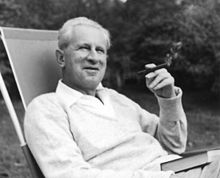
The emergence of the New Left in the 1950s and 1960s led to a revival of interest in libertarian socialism.[105] The New Left's critique of the Old Left's authoritarianism was associated with a strong interest in personal liberty, autonomy (see the thinking of Cornelius Castoriadis) and led to a rediscovery of older socialist traditions, such as left communism, council communism, and the Industrial Workers of the World. The New Left also led to a revival of anarchism. Journals like Radical America and Black Mask in America, Solidarity, Big Flame and Democracy & Nature, succeeded by The International Journal of Inclusive Democracy,[106] in the UK, introduced a range of left libertarian ideas to a new generation. Social ecology, autonomism and, more recently, participatory economics (parecon), and Inclusive Democracy emerged from this.
A surge of popular interest in anarchism occurred in western nations during the 1960s and 1970s.[107] Anarchism was influential in the counterculture of the 1960s[108][109][110] and anarchists actively participated in the late 1960s students and workers revolts.[111] During the IX Congress of the Italian Anarchist Federation in Carrara in 1965, a group decided to split off from this organization and created the Gruppi di Iniziativa Anarchica. In the 1970s, it was mostly composed of "veteran individualist anarchists with a pacifism orientation, naturism, etc, ...".[112] In 1968, in Carrara, Italy the International of Anarchist Federations was founded during an international anarchist conference held there in 1968 by the three existing European federations of France, the Italian and the Iberian Anarchist Federation as well as the Bulgarian federation in French exile.[113][114] During the events of May 68 the anarchist groups active in France were Fédération Anarchiste, Mouvement communiste libertaire, Union fédérale des anarchistes, Alliance ouvrière anarchiste, Union des groupes anarchistes communistes, Noir et Rouge, Confédération nationale du travail, Union anarcho-syndicaliste, Organisation révolutionnaire anarchiste, Cahiers socialistes libertaires, À contre-courant, La Révolution prolétarienne, and the publications close to Émile Armand.
The New Left in the United States also included anarchist, countercultural and hippie-related radical groups such as the Yippies who were led by Abbie Hoffman, The Diggers[115] and Up Against the Wall Motherfuckers. By late 1966, the Diggers opened free stores which simply gave away their stock, provided free food, distributed free drugs, gave away money, organized free music concerts, and performed works of political art.[116] The Diggers took their name from the original English Diggers led by Gerrard Winstanley[117] and sought to create a mini-society free of money and capitalism.[118] On the other hand, the Yippies employed theatrical gestures, such as advancing a pig ("Pigasus the Immortal") as a candidate for president in 1968, to mock the social status quo.[119] They have been described as a highly theatrical, anti-authoritarian and anarchist[120] youth movement of "symbolic politics".[121] Since they were well known for street theater and politically themed pranks, many of the "old school" political left either ignored or denounced them. According to ABC News, "The group was known for street theater pranks and was once referred to as the 'Groucho Marxists'."[122]
Anti-war
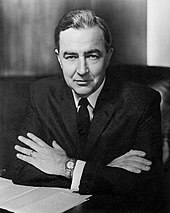
In Trafalgar Square, London in 1958,[123] in an act of civil disobedience, 60,000–100,000 protesters made up of students and pacifists converged in what was to become the "ban the Bomb" demonstrations.[124]
Opposition to the Vietnam War began in 1964 on United States college campuses. Student activism became a dominant theme among the baby boomers, growing to include many other demographic groups. Exemptions and deferments for the middle and upper classes resulted in the induction of a disproportionate number of poor, working-class, and minority registrants. Countercultural books such as MacBird by Barbara Garson and much of the counterculture music encouraged a spirit of non-conformism and anti-establishmentarianism. By 1968, the year after a large march to the United Nations in New York City and a large protest at the Pentagon were undertaken, a majority of people in the country opposed the war.[125]
Anti-nuclear

The application of nuclear technology, both as a source of energy and as an instrument of war, has been controversial.[126][127][128][129][130]
Scientists and diplomats have debated the nuclear weapons policy since before the atomic bombing of Hiroshima in 1945.[131] The public became concerned about nuclear weapons testing from about 1954, following extensive nuclear testing in the Pacific. In 1961 and 1962, at the height of the Cold War, about 50,000 women brought together by Women Strike for Peace marched in 60 cities in the United States to demonstrate against nuclear weapons.[132][133] In 1963, many countries ratified the Partial Test Ban Treaty which prohibited atmospheric nuclear testing.[134]
Some local opposition to nuclear power emerged in the early 1960s,[135] and in the late 1960s some members of the scientific community began to express their concerns.[136] In the early 1970s, there were large protests about a proposed nuclear power plant in Wyhl, Germany. The project was cancelled in 1975 and anti-nuclear success at Wyhl inspired opposition to nuclear power in other parts of Europe and North America.[137] Nuclear power became an issue of major public protest in the 1970s.[138]
Feminism
The role of women as full-time homemakers in industrial society was challenged in 1963, when US feminist Betty Friedan published The Feminine Mystique, giving momentum to the women's movement and influencing what many called Second-wave feminism. Other activists, such as Gloria Steinem and Angela Davis, either organized, influenced, or educated many of a younger generation of women to endorse and expand feminist thought. Feminism gained further currency within the protest movements of the late 1960s, as women in movements such as Students for a Democratic Society rebelled against the "support" role they believed they had been consigned to within the male-dominated New Left, as well as against perceived manifestations and statements of sexism within some radical groups. The 1970 pamphlet Women and Their Bodies, soon expanded into the 1971 book Our Bodies, Ourselves, was particularly influential in bringing about the new feminist consciousness.[139]
Free school movementedit
Environmentalismedit
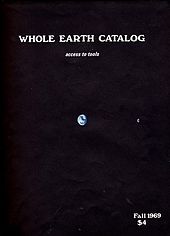
The 1960s counterculture embraced a back-to-the-land ethic, and communes of the era often relocated to the country from cities. Influential books of the 1960s included Rachel Carson's Silent Spring and Paul Ehrlich's The Population Bomb. Counterculture environmentalists were quick to grasp the implications of Ehrlich's writings on overpopulation, the Hubbert "peak oil" prediction, and more general concerns over pollution, litter, the environmental effects of the Vietnam War, automobile-dependent lifestyles, and nuclear energy. More broadly they saw that the dilemmas of energy and resource allocation would have implications for geo-politics, lifestyle, environment, and other dimensions of modern life. The "back to nature" theme was already prevalent in the counterculture by the time of the 1969 Woodstock festival, while the first Earth Day in 1970 was significant in bringing environmental concerns to the forefront of youth culture. At the start of the 1970s, counterculture-oriented publications like the Whole Earth Catalog and The Mother Earth News were popular, out of which emerged a back to the land movement. The 1960s and early 1970s counterculture were early adopters of practices such as recycling and organic farming long before they became mainstream. The counterculture interest in ecology progressed well into the 1970s: particularly influential were New Left eco-anarchist Murray Bookchin, Jerry Mander's criticism of the effects of television on society, Ernest Callenbach's novel Ecotopia, Edward Abbey's fiction and non-fiction writings, and E.F. Schumacher's economics book Small Is Beautiful.
Also in these years environmentalist global organizations arose, as Greenpeace and World Wide Fund for Nature (WWF).
Produceristedit
The National Farmers Organization (NFO) is a producerist movement founded in 1955. It became notorious for being associated with property violence and threats committed without official approval of the organization, from a 1964 incident when two members were crushed under the rear wheels of a cattle truck, for orchestrating the withholding of commodities, and for opposition to co-ops unwilling to withhold. During withholding protests, farmers would purposely destroy food or wastefully slaughter their animals in an attempt to raise prices and gain media exposure. The NFO failed to persuade the US government to establish a quota system as is currently practiced today in the milk, cheese, eggs and poultry supply management programs in Canada.
Gay liberationedit
The Stonewall riots were a series of spontaneous, violent demonstrations against a police raid that took place in the early morning hours of June 28, 1969, at the Stonewall Inn, a gay bar in the Greenwich Village neighborhood of New York City. This is frequently cited as the first instance in US history when people in the gay community fought back against a government-sponsored system that persecuted them, and became the defining event that marked the start of the gay rights movement in the United States and around the world.
Cultureedit
Mod subcultureedit
Mod is a subculture that began in London and spread throughout Great Britain and elsewhere, eventually influencing fashions and trends in other countries,[140] and continues today on a smaller scale. Focused on music and fashion, the subculture has its roots in a small group of stylish London-based young men in the late 1950s who were termed modernists because they listened to modern jazz.[141] Elements of the mod subculture include fashion (often tailor-made suits); music (including soul, rhythm and blues, ska, jazz, and later splintering off into rock and freakbeat after the peak Mod era); and motor scooters (usually Lambretta or Vespa). The original mod scene was associated with amphetamine-fuelled all-night dancing at clubs.[142]
During the early to mid-1960s, as mod grew and spread throughout the UK, certain elements of the mod scene became engaged in well-publicised clashes with members of rival subculture, rockers. The mods and rockers conflict led sociologist Stanley Cohen to use the term "moral panic" in his study about the two youth subcultures,[143] which examined media coverage of the mod and rocker riots in the 1960s.[144]
By 1965, conflicts between mods and rockers began to subside and mods increasingly gravitated towards pop art and psychedelia. London became synonymous with fashion, music, and pop culture in these years, a period often referred to as "Swinging London". During this time, mod fashions spread to other countries and became popular in the United States and elsewhere—with mod now viewed less as an isolated subculture, but emblematic of the larger youth culture of the era.
Hippiesedit
After the January 14, 1967, Human Be-In in San Francisco organized by artist Michael Bowen, the media's attention on culture was fully activated.[145] In 1967, Scott McKenzie's rendition of the song "San Francisco (Be Sure to Wear Flowers in Your Hair)" brought as many as 100,000 young people from all over the world to celebrate San Francisco's "Summer of Love". While the song had originally been written by John Phillips of The Mamas & the Papas to promote the June 1967 Monterey Pop Festival, it became an instant hit worldwide (#4 in the United States, No. 1 in Europe) and quickly transcended its original purpose.
San Francisco's flower children, also called "hippies" by local newspaper columnist Herb Caen, adopted new styles of dress, experimented with psychedelic drugs, lived communally and developed a vibrant music scene. When people returned home from "The Summer of Love" these styles and behaviors spread quickly from San Francisco and Berkeley to many US and Canadian cities and European capitals. Some hippies formed communes to live as far outside of the established system as possible. This aspect of the counterculture rejected active political engagement with the mainstream and, following the dictate of Timothy Leary to "Turn on, tune in, drop out", hoped to change society by dropping out of it. Looking back on his own life (as a Harvard professor) prior to 1960, Leary interpreted it to have been that of "an anonymous institutional employee who drove to work each morning in a long line of commuter cars and drove home each night and drank martinis ... like several million middle-class, liberal, intellectual robots."
As members of the hippie movement grew older and moderated their lives and their views, and especially after US involvement in the Vietnam War ended in the mid-1970s, the counterculture was largely absorbed by the mainstream, leaving a lasting impact on philosophy, morality, music, art, alternative health and diet, lifestyle and fashion.
In addition to a new style of clothing, philosophy, art, music and various views on anti-war, and anti-establishment, some hippies decided to turn away from modern society and re-settle on ranches, or communes. The very first of communes in the United States was on a seven-acre tract of land in southeastern Colorado, named Drop City. According to Timothy Miller,[146]
"Drop City brought together most of the themes that had been developing in other recent communities-anarchy, pacifism, sexual freedom, rural isolation, interest in drugs, art-and wrapped them flamboyantly into a commune not quite like any that had gone before"
Many of the inhabitants practiced acts like reusing trash and recycled materials to build geodesic domes for shelter and other various purposes, using various drugs like marijuana and LSD, and creating various pieces of Drop Art. After the initial success of Drop City, visitors would take the idea of communes and spread them. Another commune called "The Ranch" was very similar to the culture of Drop City, as well as new concepts like giving children of the commune extensive freedoms known as "children's rights".[147] There were many hippie communes in New Mexico, including New Buffalo[148] and Tawapa.[149]
Marijuana, LSD, and other recreational drugsedit
| Part of a series on |
| Psychedelia |
|---|
| Part of a series on |
| Cannabis |
|---|
 |
